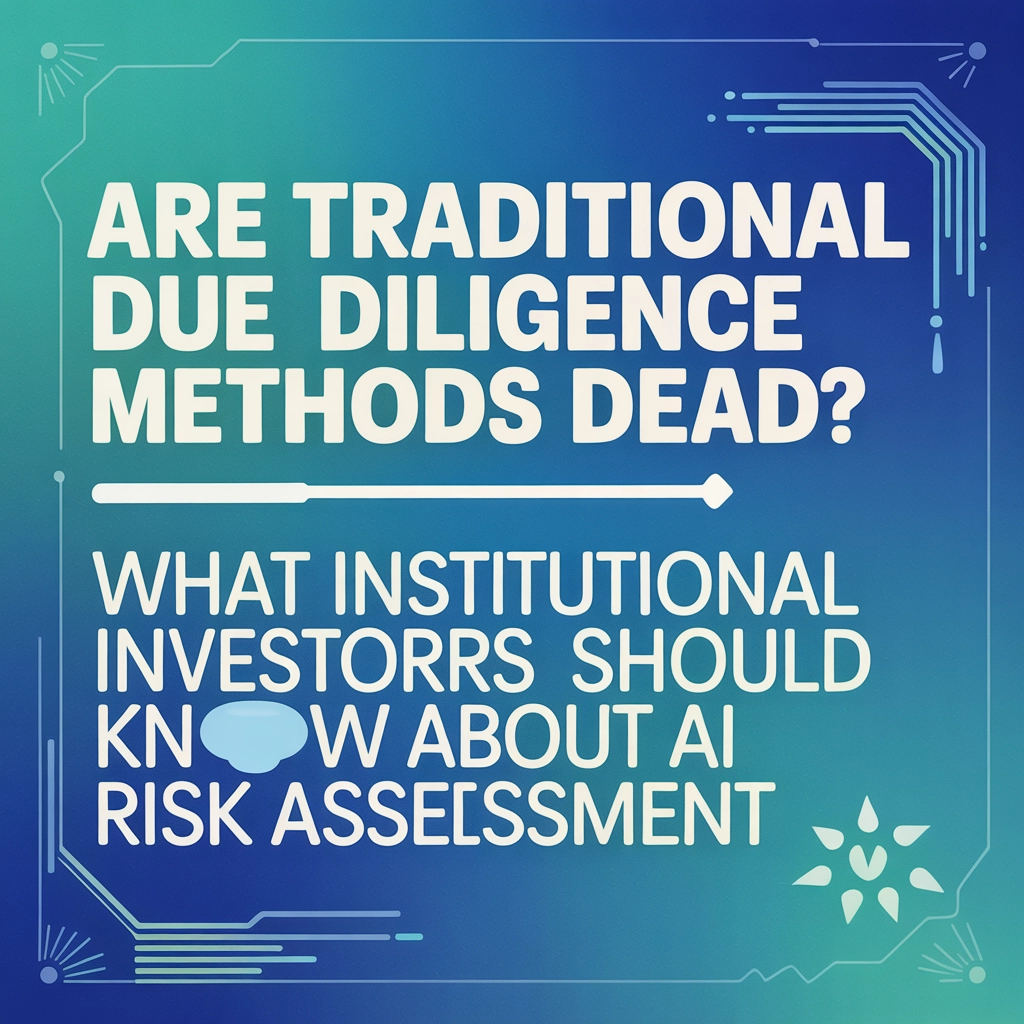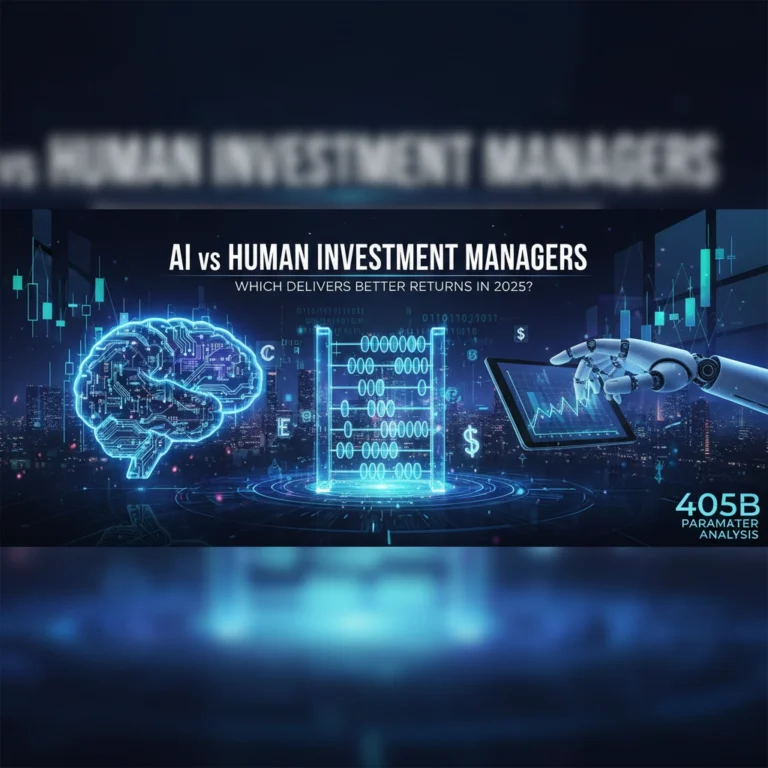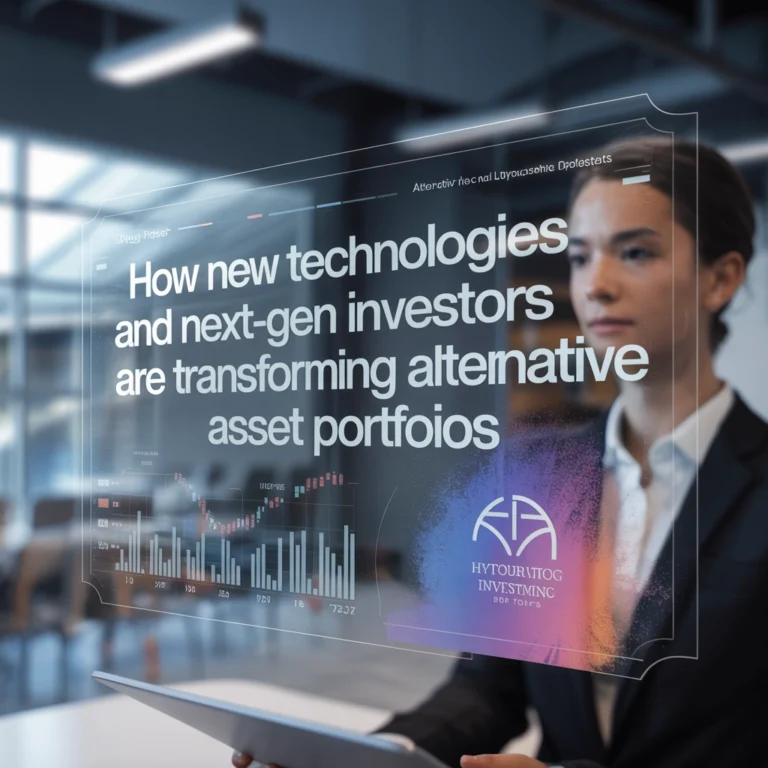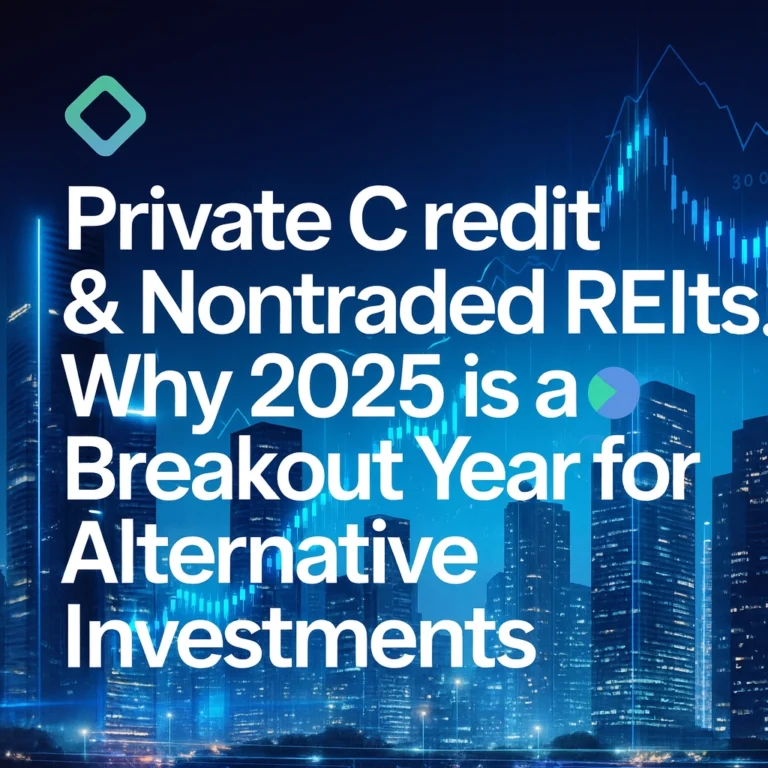Are Traditional Due Diligence Methods Dead? What Institutional Investors Should Know About AI Risk Assessment

The investment world is experiencing a seismic shift. Walk into any institutional investment firm today, and you'll likely find analysts buried in spreadsheets, manually combing through thousands of documents for the next big opportunity. But increasingly, these same firms are deploying sophisticated AI systems that can process the same volume of data in minutes rather than weeks.
This raises a critical question for institutional investors: Are we witnessing the death of traditional due diligence, or simply its evolution?
The answer isn't as straightforward as you might think. While AI is revolutionizing how we assess investment risks, the reality is more nuanced than a simple replacement story. Instead, we're seeing the emergence of hybrid approaches that combine the analytical power of artificial intelligence with the strategic insight that only human expertise can provide.
The Current State of Traditional Due Diligence
Traditional due diligence has been the backbone of institutional investing for decades. The process involves exhaustive manual analysis of financial statements, management interviews, market research, and regulatory filings. Teams of analysts spend weeks or months meticulously reviewing every aspect of a potential investment, from operational efficiency to competitive positioning.

This manual approach has served the industry well, providing the thorough vetting that institutional investors require before committing significant capital. However, it comes with inherent limitations that are becoming increasingly problematic in today's fast-paced investment environment.
The time-intensive nature of traditional due diligence often means missing time-sensitive opportunities. When a compelling investment opportunity emerges, the weeks required for comprehensive manual review can result in competitors securing the deal first. Additionally, human analysts, despite their expertise, are susceptible to fatigue, unconscious bias, and the simple impossibility of processing vast amounts of data with perfect consistency.
Consider the scale challenge: A typical middle-market acquisition might involve reviewing 50,000 to 100,000 documents. For larger transactions, this number can balloon to over a million documents. The human bandwidth required for this level of analysis is not just expensive: it's often inadequate for the complexity and volume of modern deal-making.
The Rise of AI-Powered Risk Assessment
Enter artificial intelligence. AI-powered due diligence systems are transforming how institutional investors approach risk assessment, offering capabilities that seemed like science fiction just a decade ago.
These systems can analyze massive document collections in real-time, identifying patterns, inconsistencies, and risks that might escape human detection. Advanced natural language processing allows AI to understand context, sentiment, and relationships within unstructured data, from contracts and emails to social media sentiment and news coverage.

The numbers tell a compelling story. Companies like Centerline Business Services have reported 35% productivity improvements after implementing AI-driven due diligence tools. More importantly, these systems can process millions of data points across multiple dimensions simultaneously, providing a level of analytical depth that traditional methods simply cannot match.
But speed isn't the only advantage. AI systems offer unprecedented consistency in evaluation criteria. While human analysts might weigh factors differently based on experience, current workload, or even the time of day, AI applies standardized assessment frameworks uniformly across all evaluations.
Key Advantages That Matter to Institutional Investors
Enhanced Pattern Recognition
AI excels at identifying subtle patterns across large datasets that human analysts might miss. This capability is particularly valuable in fraud detection, where AI can spot anomalies in financial reporting or unusual transaction patterns that could indicate material risks.
Predictive Analytics
Unlike traditional due diligence, which is primarily backward-looking, AI-powered systems can model potential future scenarios based on current and historical data. This shift from retrospective analysis to predictive assessment gives institutional investors a significant edge in anticipating market movements and company performance.
Comprehensive Risk Mapping
AI systems can simultaneously analyze multiple risk dimensions: financial, operational, regulatory, and reputational: creating comprehensive risk profiles that provide a holistic view of investment opportunities. This multi-dimensional analysis helps institutional investors understand not just individual risks, but how different risk factors interact and compound.

Real-Time Monitoring
Once an investment is made, AI systems can continuously monitor portfolio companies for emerging risks or opportunities, providing institutional investors with early warning systems that traditional quarterly reviews simply cannot match.
Critical Limitations and Challenges
However, AI-powered due diligence is not a panacea. Several critical limitations require careful consideration by institutional investors.
Data Quality Dependencies
AI systems are only as reliable as the data they analyze. Poor-quality, biased, or incomplete data will produce flawed results, potentially leading to costly investment mistakes. The old computer science axiom "garbage in, garbage out" applies with particular force to AI-driven due diligence.
Black Box Problem
Many AI systems, particularly deep learning models, operate as "black boxes" where the decision-making process isn't easily interpretable. For institutional investors who need to explain their investment rationale to stakeholders, this lack of transparency can be problematic.
Contextual Understanding
While AI excels at pattern recognition and data processing, it often struggles with nuanced contextual understanding that experienced human analysts take for granted. Industry-specific knowledge, cultural factors, and strategic considerations may not be fully captured by algorithmic analysis.

Regulatory and Compliance Concerns
The regulatory landscape around AI in financial services is still evolving. Institutional investors must navigate complex compliance requirements while ensuring their AI systems meet regulatory standards for transparency, fairness, and accountability.
What Institutional Investors Need to Know
For institutional investors considering AI-powered due diligence, several key considerations should guide implementation:
Start with Clear Objectives
Define specific use cases where AI can add the most value. Rather than attempting to replace entire due diligence processes immediately, focus on areas where AI's strengths: such as document analysis or pattern recognition: can deliver immediate benefits.
Invest in Data Infrastructure
Successful AI implementation requires robust data infrastructure. This means not just collecting data, but ensuring it's clean, standardized, and accessible. Many institutional investors underestimate the data preparation work required for effective AI deployment.
Maintain Human Oversight
The most successful AI implementations combine algorithmic analysis with human expertise. AI can handle data processing and initial risk identification, while human analysts focus on strategic assessment and contextual interpretation.
Choose the Right Tools
The AI due diligence market offers various solutions, from comprehensive platforms to specialized tools. Popular options include IBM AI Fairness 360 for bias detection, Google's What-If Tool for model interpretation, and specialized platforms like SecML for security assessment.
The Path Forward: Hybrid Intelligence
The future of due diligence lies not in choosing between human and artificial intelligence, but in combining them effectively. This hybrid approach leverages AI's strengths in data processing, pattern recognition, and consistency while preserving human judgment for strategic decision-making and contextual interpretation.

Leading institutional investors are already implementing this model, using AI to handle initial screening, document analysis, and risk identification, while reserving complex strategic assessments and final investment decisions for experienced professionals.
The competitive advantage will belong to firms that can seamlessly integrate these capabilities, creating due diligence processes that are faster, more comprehensive, and more accurate than either pure human or pure AI approaches could achieve alone.
For institutional investors, the question isn't whether to adopt AI-powered due diligence: it's how quickly and effectively they can implement hybrid systems that enhance rather than replace human expertise. Those who master this integration will be best positioned to capitalize on the enhanced efficiency, accuracy, and risk detection capabilities that define the future of institutional investing.
The death of traditional due diligence has been greatly exaggerated. Its evolution, however, is just beginning.






